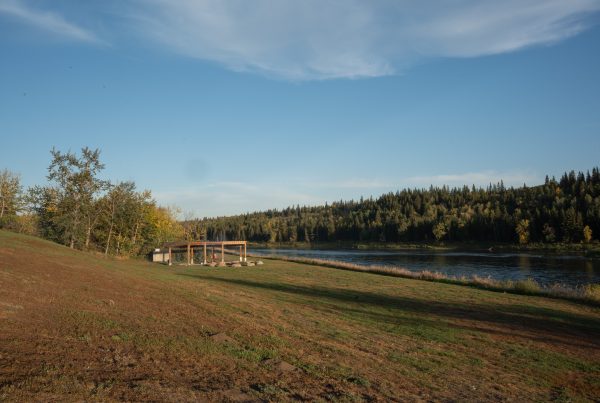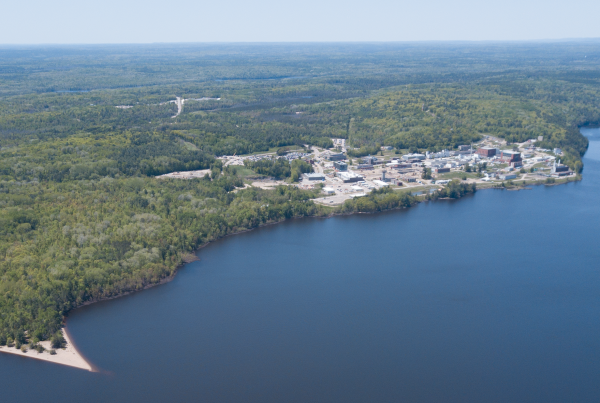Last week we celebrated the final victory in Tsilhqot’in Nation’s decade-long struggle to stop the desecration of their land by gold mining. The Supreme Court’s word is final: Taseko’s New Prosperity mine is dead. Done for. Kaput.
There are some events that stick with you for life. You remember where you were, like when planes flew into the twin towers or your grandchild was born, and you carry the history in your being from then on. I vividly recall the day the Tsilhqot’in won for the first time: I was burning off steam at the YMCA and saw my husband approach with urgency. My brain switched to “someone must have died” and everything went slo-mo. I could see his mouth moving but my inner drama drowned out the words. He took the weights out of my hands and repeated, “They won. The Tsilhqot’in won. The mine is rejected.”
That was 2010. RAVEN was a year and a half old, and supporting the Xeni Gwet’in and Yunesit’in First Nations was my key focus at the time. I was the only staff person then and worked out of a borrowed former storage closet. The first Taseko proposal – the Prosperity open-pit gold and copper mine, was castigated by the independent tribunal of environmental assessors. Then Environment Minister Jim Prentice pithily announced, when he publicly rejected the mine proposal, that the panel report was the most “scathing” he had ever read. The report cited the mine would result in “significant adverse environmental effects on fish and fish habitat, on navigation, on the current use of lands and resources for traditional purposes by First Nations and on cultural heritage, and on certain potential or established Aboriginal rights [to hunt, trap and fish].”
‘Nuff said. Or so I thought. That was naive of me.
The news of that first win, as it turned out, would need to buoy us all through another decade of wins, followed by hurdles. After the second federal rejection of the repackaged project, now dubbed the New Prosperity mine, it was like the finish line kept moving. The legal challenges piled on, starting with two Taseko-initiated judicial reviews. And the Tsilhqot’in gamely kept stepping up for the next round – strong, proud, feisty, and unwavering. So, we at RAVEN, now a larger team, took our lead from their collective wisdom and kept fighting too.
Thankfully we weren’t alone in the ten-year effort to raise the funds needed for experts, scientific reports, and legal arguments. A powerful cohort of donors and funders like Donner Canadian Foundation, Fitzhenry Family Foundation, Global Greengrants, and Wilburforce Foundation all stood with the Xeni Gwet’in and Yunesit’in as they steadfastly defended their culture and sacred places from a company determined to get the permit needed to access the gold. People from the RAVEN community stood up to donate and organize events, while others donated Airmiles so chiefs could attend hearings in Ottawa. So many people, acting together, formed a ‘backbone brigade’ of love and solidarity.
If you have not had the privilege of experiencing Teztan Biny (Fish Lake), it may be hard to understand the fierce need to protect it. Teztan Biny is a sacred place of spiritual renewal and has been for countless generations for the Tsilhqot’in. The original proposed mine site — which encompassed Teztan Biny, Yanah Biny (Little Fish Lake), and the surrounding area, called Nabas — is traditional and proven Aboriginal rights territory where the Tsilhqot’in has hunted, trapped, fished, collected medicinal plants, and shared their knowledge and history from generation to generation through cultural gatherings and ceremonies.
The lakes are home to a genetically unique type of rainbow trout. They are also in the headwaters of one of the last major viable salmon run that comes up the Fraser River, and water in the area is pure enough that the people are able to drink directly from the source — a testament to the protection the Tsilhqot’in have provided their traditional lands for generations. The area also provides important habitat for the threatened South Chilcotin grizzly bear.
But there is something more. The power of the place is palpable: it’s something that defies description and yet once experienced is transformative. Clearly, not everyone succumbs. The lure of precious and semi-precious minerals below the surface proved too irresistible.
This brings me to 2020. I will hold the memory of May 14th for the rest of my days. It overwrites in a way the long, tangled history of one company’s desire to subjugate Tsilhqot’in land, rights, culture, and history. It is with gratitude to Tsilhqot’in leadership, past and present, to the communities, to their legal teams and the experts, and to the donors of all stripes that I write this.
We step into a new chapter now. Taseko did not evaporate and appears poised to push for exploration even in the absence of a viable project; however, as one legal advisor recently told me, judges read the news too. There may be more legal hurdles ahead, but this specific project is truly done. The finish line crossed. Gold medal to the Tsilhqot’in victors. A win for us all.
With thanks,
Susan Smitten
If you would like to support RAVEN’s long term campaigns with a monthly donation, join our Circle of Allies here.






